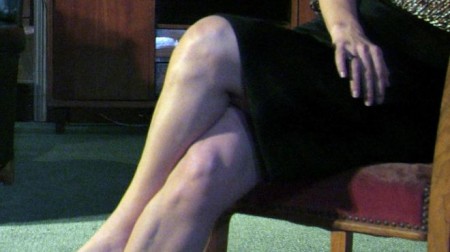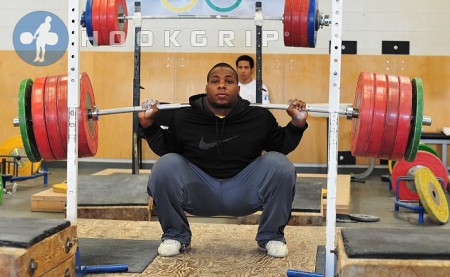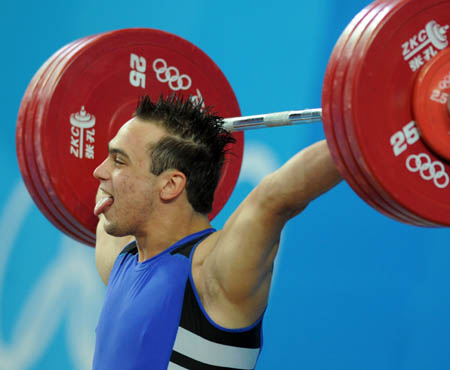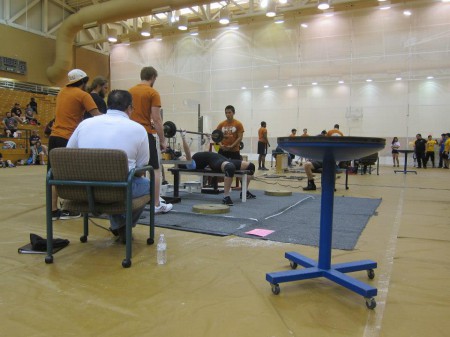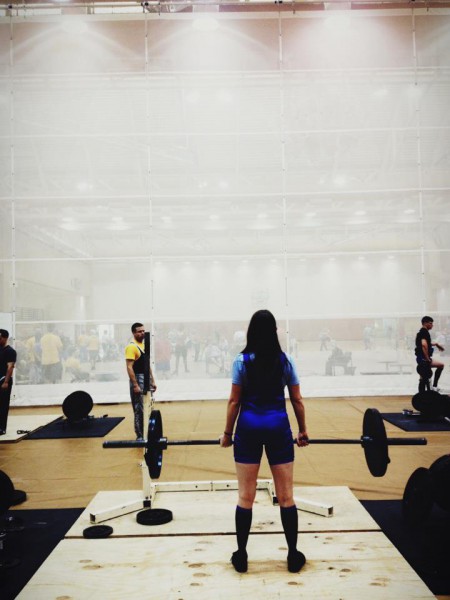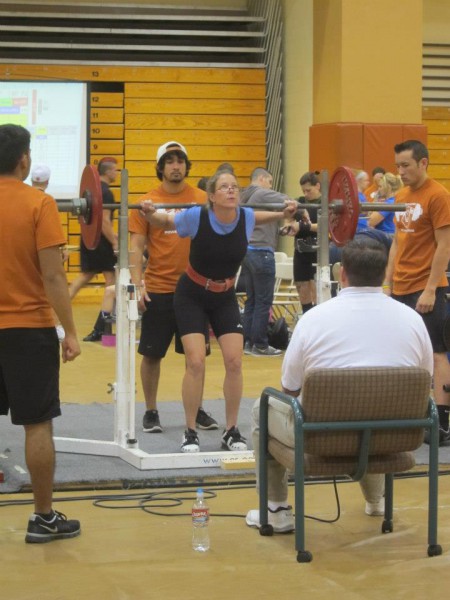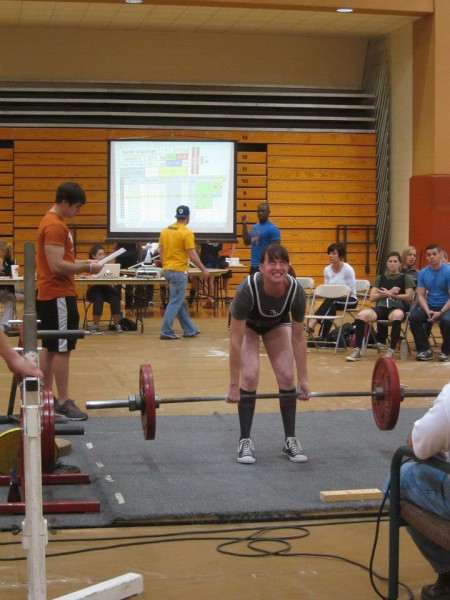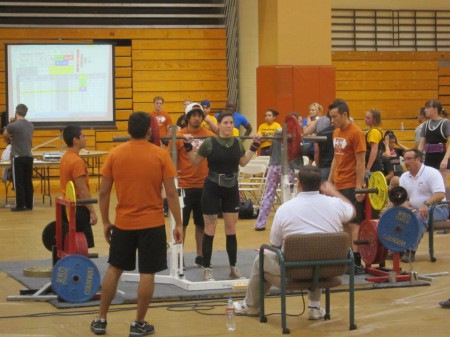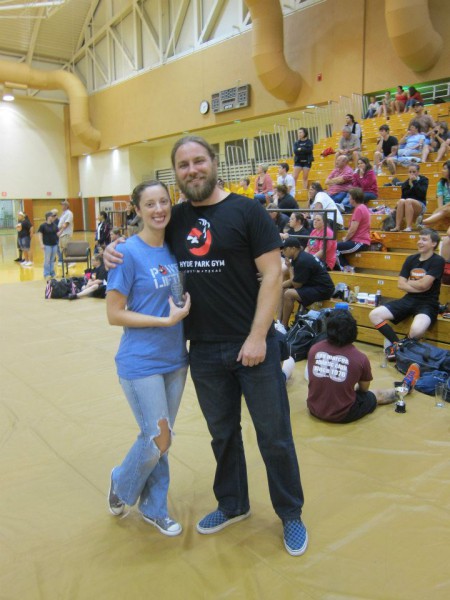Ladies, I’m here for you.
I’m here to lift you up, overhead in a pressing movement, to protect you from harm. And that harm comes from a formidable opponent. One that will belligerently scoff and argue with you until the end of time. That opponent is yourself.
Allow me to explain! Your sense of womanly propriety is going to kill your squat! No, I don’t mean putting a strap on your boobs (link is unbelievably safe for work) or wearing makeup — I mean crossing your legs and wearing high heels!
I once coached a girl who could barely squat or bend down without her knees touching each other. She had learned to keep her legs together because it’s the “womanly thing to do” when wearing a skirt or dress. After all, a womanly woman doesn’t want to have a Britney Spears-like-hooha incident. The unfortunate result is that her muscles adapted to this chronic application of poor mechanics to the point of having non-existant external hip rotators, shortened groin muscles, a lack of hamstring musculature, and a lack of quad development. I’ve seen women who literally push their knees together as a brace for standing up in the same way that your grandparents use a cane.
These examples represent the extreme, but chronically sitting cross-legged or with the legs together will probably create some muscular limitations. For example, one of the regular female 70’s Big readers once lamented how her lack of mobility in her internal hip rotators (the groin area) was inhibiting her split position in the jerk; I could see this being caused by “womanly sitting”. Merely standing up with the knees close together can also contribute to shortened internal rotators. The motion typically involves the knees pushed in and forward while the woman cantilevers her torso to push herself into a standing position with her knees; this completely removes the hamstrings and hips from the standing up motion. As a result, new clients or trainees may have a bit of trouble with exercises like squatting and will need to open their hips before training.
Combine dress-wearing etiquette with the likelihood of wearing high heels, and we have a situation that would make Kelly Starrett’s head explode. The raised heel severely alters the mechanics of the entire lower body; the ankle is placed in severe plantar flexion to change the force application on the foot, and force easily reverberates up into the knees, hip, and back. Woman know this is occurring because high heels are uncomfortable, yet they wear them anyway.
If the discomfort of wearing high-heel shoes were not enough, try this on for size: The point of a spike heel worn by the average-sized woman is subjected to nearly 2,000 pounds of pressure per square inch with every step she takes. The force is shot into the heel and reverberates up the entire body. When air travel was in its infancy, women wearing high heels were actually prohibited from boarding airplanes because the heels of their shoes might pierce the thin metal floors.
Yikes. Not only do high heels put a lot of force on structures that weren’t adapted to handle the stress in that manner, but they also shorten the calves — an area that is almost always in need of “opening” for improved mechanics in lifting and athletics. Whether you’re planning on squatting, running/sprinting, snatching, cleaning, or jerking, making the calves tight will only be counter-productive.
What’s a girl to do?
 Am I suggesting that you not wear skirts or heels? Absolutely not! What I’m actually saying is this: TAKE YO SHOES OFF AND SPREAD YO LEGS — WHOOOOOOOOOOWEEEEEEEEEEE!
Am I suggesting that you not wear skirts or heels? Absolutely not! What I’m actually saying is this: TAKE YO SHOES OFF AND SPREAD YO LEGS — WHOOOOOOOOOOWEEEEEEEEEEE!
Man, I really wanted to end the post right there. But I need to clarify my advice so that all of you don’t take it literally and emulate Paula Broadwell. ZING!
Okay…c’mon guys…focus.
No, I’m not saying that you shouldn’t wear dresses or heels. But, when you do wear skirts or heels, know that you’ll have some extra mobility work to do on the structures you shorten. You can also help yourself by avoiding this attire on days when you are plan to squat or Olympic lift, especially if you’re going heavy. While wearing a dress isn’t a big deal — especially if you’re diligent with mobility work — it’d be a good idea to limit the frequency of wearing heels in a week. Those gals who change from tennis shoes to heels as they arrive at the office have already figured that heels are inherently bad. You could even save the heels for a special occasion, like those times when you want to seduce a four star general.
Crossing legs and wearing heels won’t destroy your training, but doing so regularly without extra mobility attention will result in chronically tight structures. The result could be injurious, but it will most likely result in inefficient lifting technique. Figure out what’s more important: training or looking good at work. And if it’s the latter, then get working on that mobility like you’re working on a rousing biography.

